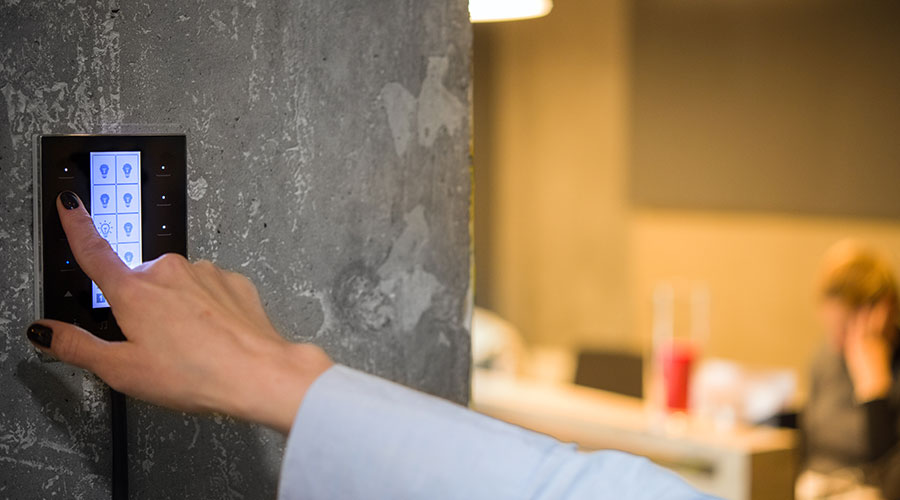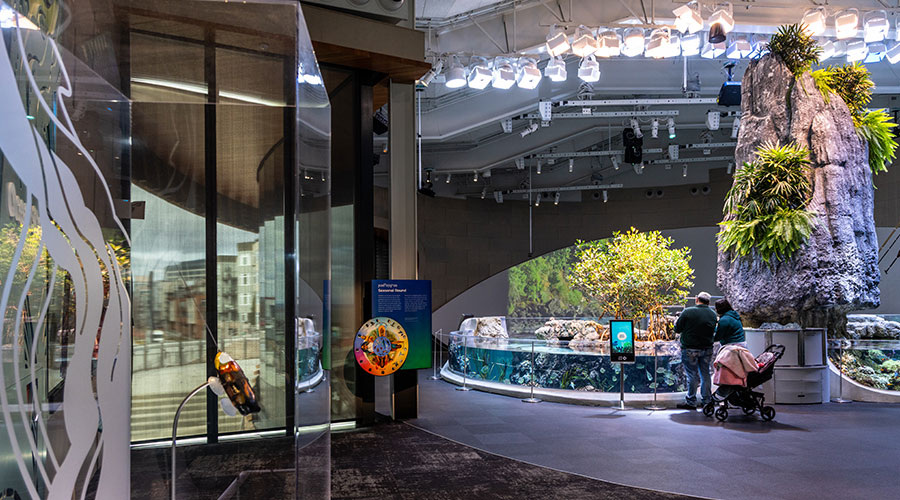Spotlight on Ballasts
A new generation of ballasts provides the key to cost-effective improvements that improve fluorescent lighting efficiency
Most fluorescent lighting system upgrades or relighting projects involve a ballast change. New ballast models are available for a variety of building applications, but ballast selection can be overwhelming when managers begin the task of examining the array of new ballasts on the market.
But managers who understand the characteristics and advantages of these products will be better able to select models that produce the greatest cost savings in terms of energy and maintenance for the investment.
The process should start with a consideration of everyday lighting problem areas, instead of searching for products first.
Universal Voltage Modes
Many institutional and commercial facilities have different system voltages in various parts of their buildings. The original lighting was probably 120-volt (v) incandescent, but later it might have been converted to fluorescent. Later, other parts of a building might have been built with 277-v fluorescent systems.
Even when facilities have good records to indicate the boundaries for these systems, maintenance and engineering personnel are slowed in their ballast replacement task when they don’t know the voltage for a particular system.
The solution to this predicament is to use ballasts with a universal voltage feature that automatically accept any line voltage applied between 120v and 277v. One manufacturer offers universal voltage models for 347-480v applications. Besides saving valuable maintenance time, this feature reduces costs by enabling departments to stock fewer replacement ballasts and produces savings in distributor restocking charges.
Switching Applications
Many fluorescent systems have been upgraded to use electronic ballasts. But some facilities have made the mistake of using instant-start ballasts for switching applications. Although these ballasts use less energy, they do not heat the lamp cathodes and are intended for non-switching applications.
When they are used for switching applications, the result can be much shorter lamp life and increased relamping cost. One recommendation is to change out instant-start ballasts for fluorescent systems that are switched by occupancy sensors and that experience short lamp life.
The recommended solution is to use program-start ballasts. This tactic can extend lamp calendar life and reduce replacement lamp costs. Because they precisely control the timing of cathode heating and the application of high voltage to the lamp, program-start ballasts can outperform rapid-start ballasts. Program-start designs can provide up to 100,000 starts and extend lamp life by about 50 percent.
Maximizing Energy Savings
For applications with high burn hours in areas with high electric rates — and little switching activity —a few watts saved can pay back in a short time. New-generation, instant-start ballasts are available in either a standard light output design — 0.88 ballast factor (BF) — or a low-watt design — 0.78 BF.
These high-efficiency designs reduce ballast losses significantly, compared with standard-efficiency models. For example, operating two standard F32T8 lamps with 0.88 BF design saves 4 watts with no difference in light output. When the new 30w T8 lamps are used, further savings are realized. Also, using the 0.78 BF ballast can produce energy savings of more than 10 percent.
Managers also can cost-effectively upgrade cove lighting with new-technology lamps and ballasts. The T5 lamp, an attractive and energy-saving alternative to T12 cove systems, is especially suitable for the higher temperatures found in coves. One manufacturer offers a ballast model that will power one or two standard T5 lamps of any wattage — 14, 21, 28 or 35. This is possible because all lamps in the standard T5 family operate at the same current, 170 ma.
All models deliver the same surface brightness, so no matter what length lamp fills out the length of the cove, the brightness remains uniform. This is another example of using one ballast model for many applications, reducing inventory.
For brighter coves and other indirect lighting applications, managers might consider a newly announced T5HO ballast designed for the operation of two, three, or four F54 — 45-inch — lamps. This ballast also can be used to power 8-foot T8 lamps — F58 — or any long twin tube models — 36/39-, 50-, or 55-w.
Multi-lamp versatility, remote mounting, and a high-low switching option make this model attractive for many new applications. Due to its program-start design, managers can expect longer lamp life to save maintenance dollars.
Line-voltage Dimming Ballasts
Conference and presentation rooms traditionally have been built with two lighting systems. One is an incandescent system that usually uses recessed cans and wall dimmers. The second is often a fluorescent non-dimming system for general lighting. The incandescent system requires a great deal of maintenance, due to the short life of incandescent lamps.
The solution to this situation is to remove the overhead incandescent system and replace the ballasts in the fluorescent system with line-voltage dimming ballasts that can be connected to the existing incandescent wall-box dimmers.
The main benefit of this improvement, which can be accomplished with electrical maintenance staff, is lower maintenance costs for a small investment in ballasts.
If downlights are still needed, they can be replaced with new compact fluorescent lamp (CFL) downlights, which managers can specify with dimming ballasts. This tactic provides another dimming solution, which allows CFLs to successfully compete with the incandescent market.
Trend Watch
Until recently, managers who needed recessed lighting in high ceilings in retail or hotel applications had to use high-wattage incandescent or lower-wattage metal halide. With the advent of high-wattage models, these applications can be designed with CFLs.
Electronic ballasts are available to power any of the newer CFLs, including the new 70w — NEMA CFTR70W/GX24q — lamp. One model also is rated to operate: one 57w quad or triple lamp; two 26w quad or triple lamps; two 32w triple lamps; two 42w triple lamps; two 28w 2D lamps; or two 38w 2D lamps. The ballast also will operate one 22w and one 40w circline lamp, or two 40w long twin tube lamps.
This model also demonstrates a trend in new ballast designs toward those designed to operate more than one type of lamp. This feature enables managers to reduce the number of different ballasts stocked in a facility, but it requires careful examination for maintenance personnel when replacing ballasts.
Technical Insights
When lamps operate on high-frequency electronic ballasts in the 20-40 kHz range, they can interfere with infrared (IR) remote controls. To minimize interference, managers and technicians should ensure that the ballasts operate the lamps in the 40–54 kHz range.
Finally, managers can select ballasts that incorporate a good end-of-life (EOL) circuit, which shuts off lamp current when the small diameter lamps they drive experience EOL phenomenon. But managers also can select ballasts that are equipped with anti-arcing protection on all output leads that are UL CC rated. An auto-restart feature eliminates the need to reset power breakers after failed lamps are replaced.
Armed with up-to-date information on ballasts, managers can begin to address facility lighting problems with the latest generation of lighting system technology.
John L. Fetters is principal with Effective Lighting Solutions in Columbus, Ohio.
Related Topics:











